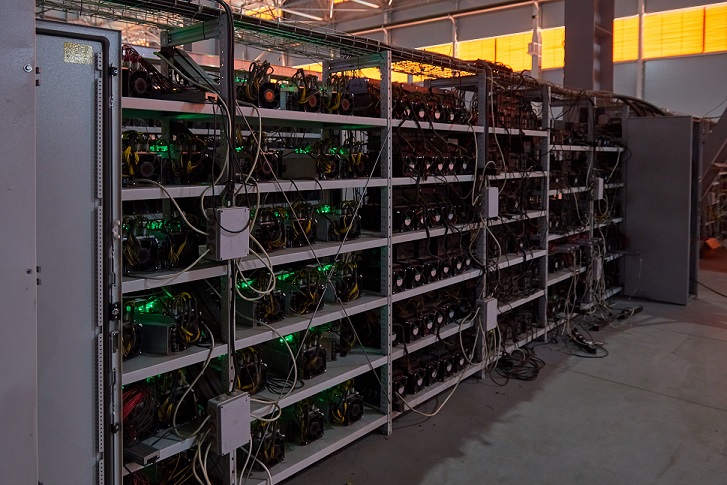
Cryptocurrencies are decentralized digital currencies that use encryption techniques as security while operating independently of central banks. Of these virtual mediums of exchange, bitcoin continues to be the most popular.
Cryptocurrency mining is the process of verifying and adding bitcoin and other cryptocurrency transactions to a public ledger known as the blockchain (the underlying technology). It is also the method by which new bitcoins are released.
The mining process involves computers solving difficult cryptographic problems, and the transaction fees associated with bitcoin mining are awarded to the miners. The practice itself uses a large amount of energy and produces a significant amount of heat. Therefore countries with stable governments, cheap electricity and cold temperatures are ideal for cryptocurrency mining operations.
Bitcoins have been around for almost 10 years. In the early days, the mining was done with regular desktop computers, but as it became more competitive it required powerful, specialized computer equipment. Although these mining “rigs” are expensive, the biggest cost is the power itself.
Aside from bitcoin, there are now over 1,500 cryptocurrencies and tokens using blockchain technology (any digital cryptocurrency similar to bitcoin is referred to as an altcoin).
According to co-authors, Don and Alex Tapscott, authors of Blockchain Revolution (2016), “Currency isn’t the only purpose of blockchain technology. The blockchain technology is an incorruptible digital ledger of economic transactions that can be programmed to record not just financial transactions but virtually everything of value.”
Blockchains record and verify transactions. They are transparent and incorruptible. Blockchain technology is poised to affect every industry involving large amounts of digital information needing authentication. Examples are contracts, governance, supply chain auditing, protection of intellectual property, and even in energy distribution by enabling the buying and selling of energy (for example, redistribution of solar energy in neighbourhood microgrids).
As cryptocurrencies and blockchain mining become more prevalent, mining operations are increasingly using more and more energy. These ventures can be set up anywhere in the world, but because the single biggest variable is the cost of electricity, miners look to countries or jurisdictions with the lowest energy costs.

Today, massive server farms exist in China (over 50%), Iceland, Sweden and the US. While these countries provide low cost hydroelectricity, in the cases of China and the US in particular, high-polluting coal is also being used.
Recently China, South Korea and others have decided to clamp down on bitcoin mining. But cryptocurrency and blockchain technology is not going away and therefore miners are looking to set up shop elsewhere.
Is Canada the Next Cryptocurrency Mining Hotspot?
This means Canada stands to benefit. For example, Manitoba Hydro and Hydro Quebec generate a huge amount of cheap hydropower. In fact, Quebec has already branded itself as a source of “green bitcoin.”
David Vincent, director of business development at Hydro-Québec, claims that the province has three of four of the world’s largest blockchain players. Some projects in the works are up to 300 megawatts.
Meanwhile, Drumheller, Alberta, is the new home to Hut 8 Mining Corp. who claim their price for electricity is three cents per kilowatt hour.
So far, Canada has allowed cyberminers to operate with little interference, although the government has a long way to go in terms of fully accepting cryptocurrency development.
Interestingly, the number two cryptocurrency based on market capitalization is Ethereum, which was created by 20 year-old Canadian immigrant, Vitalik Buterin, who has a supposed IQ of 257. The Canadian government has launched a trial to explore the use of Ethereum blockchain technology in making government research more transparent.
What about Ontario as a potential destination for cryptocurrency miners? After all, the province has excess electricity and would seem to be a natural fit.
However, Ontario also has some of the highest electricity prices in North America. A recent report published in 2017 by Hydro Quebec that compares the average electricity prices for large power consumers in major North American Cities shows Toronto and Ottawa as the most expensive:
| City | Province | Avg Price in cents per kWh |
| Toronto | ON | 14.55 |
| Ottawa | ON | 12.46 |
| Halifax | NS | 10.14 |
| Charlottetown | PE | 9.31 |
| Regina | SK | 8.67 |
| Moncton | NB | 7.86 |
| Edmonton | AB | 7.68 |
| Vancouver | BC | 7.54 |
| St John’s | NL | 6.95 |
| Calgary | AB | 6.09 |
| Montreal | QC | 5.18 |
| Winnipeg | MB | 5.01 |
Cryptocurrencies have a long way to go before they are accepted into the mainstream. In fact, there was a large decline in their value in recent weeks mainly due to negative publicity that included major credit cards banning them and increased scrutiny from regulators.
Nevertheless, with its abundance of cheap, eco-friendly energy resources, Canada could become a world leader in these and other evolving technologies.

